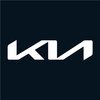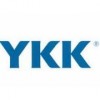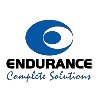Assembly Production Engineer
20+ Assembly Production Engineer Interview Questions and Answers

Asked in Samvardhana Motherson Group

Q. What is this iso-ts and iatf audit. Which you calibration gauge and parameter.
ISO/TS and IATF audits are quality management system audits for automotive industry. Calibration gauge and parameter are important for ensuring accuracy and consistency in production.
ISO/TS and IATF audits are conducted to ensure that the quality management system of a company meets the requirements of the automotive industry.
Calibration gauge and parameter are used to ensure that the measurement equipment used in production is accurate and consistent.
Calibration is important...read more

Asked in Wakefit

Q. What are TPM and JH steps?
TPM stands for Total Productive Maintenance and JH steps refer to Job Hazard Analysis steps.
TPM is a systematic approach to equipment maintenance that aims to maximize productivity and minimize downtime.
It involves proactive maintenance, employee involvement, and continuous improvement.
JH steps are a set of procedures used to identify and analyze potential hazards in a job or task.
They help in developing safety measures and reducing the risk of accidents or injuries.
Examples ...read more

Asked in Samvardhana Motherson Group

Q. What is assembly line processing like in your plant?
Assembly line processing in our plant involves a series of steps where each worker performs a specific task to assemble a product.
Each worker is responsible for a specific task in the assembly process
The product moves along a conveyor belt from one worker to the next
Quality control checks are performed at various stages of the process
Efficiency and productivity are key factors in assembly line processing
Examples include automotive assembly lines, electronics manufacturing, an...read more

Asked in Ashok Leyland

Q. How can stroke length be increased without changing the bore diameter?
To increase stroke length without changing bore diameter, one can modify the crankshaft design or adjust the connecting rod length.
Modify the crankshaft design to increase the throw radius, which will result in a longer stroke length.
Adjust the connecting rod length to change the stroke ratio, allowing for a longer stroke without changing the bore diameter.
Consider the trade-offs and limitations of increasing stroke length, such as increased stress on the engine components an...read more

Asked in Samvardhana Motherson Group

Q. What is OEE calculation and efficiency?
OEE calculation is a measure of manufacturing productivity that combines availability, performance, and quality metrics.
OEE stands for Overall Equipment Effectiveness
It is calculated by multiplying availability, performance, and quality metrics
Availability measures the percentage of time the equipment is available for production
Performance measures the speed at which the equipment is running compared to its maximum speed
Quality measures the percentage of good quality products...read more

Asked in Samvardhana Motherson Group

Q. What are your thoughts on kaizen and suggestion programs?
Kaizen is a Japanese term for continuous improvement, while suggestion refers to ideas for improvement from employees.
Kaizen involves making small, incremental improvements to processes and systems over time.
Suggestion programs encourage employees to share their ideas for improvement and provide feedback on existing processes.
Both kaizen and suggestion are important for promoting a culture of continuous improvement and innovation in the workplace.
Examples of kaizen and sugges...read more
Assembly Production Engineer Jobs


Asked in Sona Koyo Steering Systems

Q. What is the OEE calculation and how do you implement it?
OEE (Overall Equipment Effectiveness) measures manufacturing productivity by evaluating availability, performance, and quality.
OEE = Availability x Performance x Quality.
Availability considers downtime; for example, if a machine is down for maintenance.
Performance measures speed; if a machine runs at 80% of its maximum speed, it's a performance loss.
Quality assesses the number of good units produced versus total units; for instance, if 90 out of 100 units are good, quality is...read more

Asked in TDK India Private Limited

Q. What is OEE calculation and its effectiveness?
OEE calculation is a measure of manufacturing productivity that combines availability, performance, and quality metrics.
OEE stands for Overall Equipment Effectiveness
It is calculated by multiplying availability, performance, and quality metrics
Availability measures the percentage of time the equipment is available for production
Performance measures the speed at which the equipment is producing compared to its maximum potential
Quality measures the percentage of good quality pr...read more
Share interview questions and help millions of jobseekers 🌟


Asked in Ashok Leyland

Q. What is your opinion about engines?
An engine is a complex mechanical device that converts energy into mechanical motion.
Engines are used in various applications such as automobiles, aircraft, and power plants.
They can be powered by different sources such as gasoline, diesel, or electricity.
Engines consist of multiple components such as cylinders, pistons, valves, and crankshafts.
Efficiency and performance are important factors in engine design and development.
Regular maintenance and proper lubrication are nece...read more

Asked in Samvardhana Motherson Group

Q. What is 5S? OEE, manpower handling
5S is a methodology for workplace organization and standardization. OEE measures manufacturing productivity. Manpower handling refers to managing employees.
5S involves sorting, simplifying, sweeping, standardizing, and sustaining.
OEE measures the percentage of planned production time that is truly productive.
Manpower handling includes recruiting, training, scheduling, and performance management.
All three concepts are important for efficient and effective assembly production.

Asked in Samvardhana Motherson Group

Q. What are 5S and FIFO?
5S is a methodology for workplace organization and standardization. FIFO is a method of inventory management.
5S stands for Sort, Set in Order, Shine, Standardize, and Sustain
5S helps to improve efficiency, safety, and quality in the workplace
FIFO stands for First In, First Out
FIFO is used to manage inventory by ensuring that the oldest items are used or sold first
FIFO is commonly used in industries such as food and beverage, where products have a limited shelf life

Asked in Samvardhana Motherson Group

Q. What is this tsv and csv
TSV stands for Tab Separated Values and CSV stands for Comma Separated Values.
TSV and CSV are file formats used to store and exchange data.
TSV separates values using tabs while CSV separates values using commas.
Both formats are commonly used in spreadsheets and databases.
TSV is preferred when data contains commas while CSV is preferred when data contains tabs.

Asked in Saif Bin Darwish

Q. What is a KPI?
KPI stands for Key Performance Indicator. It is a measurable value that demonstrates how effectively a company is achieving its key business objectives.
KPIs are used to evaluate the success of an organization or of a particular activity in which it engages.
They help to identify areas that require improvement and to set targets for improvement.
Examples of KPIs include revenue growth, customer satisfaction, employee turnover rate, and production efficiency.
KPIs should be specif...read more

Asked in Falcon Autotech

Q. Types of gear,oil,belts,bearing,pressure etc
Types of gear, oil, belts, bearing, pressure, etc. used in assembly production engineering.
Types of gears: spur gear, helical gear, bevel gear, worm gear, etc.
Types of oils: hydraulic oil, gear oil, compressor oil, etc.
Types of belts: V-belt, timing belt, flat belt, etc.
Types of bearings: ball bearing, roller bearing, thrust bearing, etc.
Types of pressure: air pressure, hydraulic pressure, pneumatic pressure, etc.

Asked in Samvardhana Motherson Group

Q. What is this wsqc.wes.and swc
Insufficient information provided to answer the question.
There is not enough context to determine what wsqc.wes.and swc refers to.
More information is needed to provide an accurate answer.
It is important to clarify the context of the question before attempting to answer it.

Asked in Samvardhana Motherson Group

Q. What is skills matrix
A skills matrix is a tool used to assess and track the skills and competencies of employees within an organization.
It helps identify skill gaps and training needs
It can be used for succession planning and career development
It can aid in performance evaluations and goal setting
It can be used to ensure compliance with industry standards and regulations

Asked in Samvardhana Motherson Group

Q. What poka yoke and capa
Poka yoke is a mistake-proofing technique and CAPA is a corrective and preventive action process.
Poka yoke is a Japanese term that means 'mistake-proofing'. It involves designing a process or product in a way that prevents errors from occurring.
CAPA stands for Corrective and Preventive Action. It is a process used to identify and address the root cause of a problem to prevent it from happening again.
Poka yoke and CAPA are both important tools in ensuring quality and efficienc...read more

Asked in Samvardhana Motherson Group

Q. Different numatic and hydraulic pressure
Pneumatic pressure uses compressed air while hydraulic pressure uses a liquid, usually oil.
Pneumatic pressure is typically lower than hydraulic pressure
Hydraulic pressure is more efficient for heavy-duty applications
Pneumatic pressure is cleaner and easier to maintain
Examples of pneumatic systems include air brakes on vehicles and pneumatic tools
Examples of hydraulic systems include car brakes and heavy machinery

Asked in Kia Motors

Q. How to adapting family in kia location
Adapting family to a new Kia location involves community integration, support systems, and understanding local culture.
Research local schools and educational opportunities for children, ensuring a smooth transition for their education.
Explore community resources such as parks, recreational centers, and family events to foster social connections.
Engage with local Kia employee networks or support groups to share experiences and advice on settling in.
Familiarize the family with ...read more

Asked in Sona Koyo Steering Systems

Q. What are 4M, 3M, and PPLH?
4m and 3m refer to measurements, while pplh stands for parts per labor hour in production contexts.
4m typically refers to a measurement of 4 meters, often used in construction or manufacturing.
3m can refer to 3 meters, which is another common measurement in various engineering fields.
pplh stands for parts per labor hour, a metric used to evaluate productivity in assembly lines.

Asked in YKK

Q. What is Six Sigma?
6 Sigma is a data-driven methodology used to improve business processes by reducing defects and variability.
It aims to achieve a level of quality where the probability of defects is less than 3.4 per million opportunities.
It involves five phases: Define, Measure, Analyze, Improve, and Control (DMAIC).
It uses statistical tools and techniques to identify and eliminate the root causes of defects.
It is widely used in manufacturing, healthcare, finance, and other industries.
Exampl...read more

Asked in Tech Mahindra

Q. What are the 7 QC Tools?
The 7QC Tools are essential quality control tools used to improve processes and solve problems in manufacturing and service industries.
1. Check Sheet: A structured form for collecting and analyzing data, e.g., tracking defects in a production line.
2. Histogram: A graphical representation of data distribution, e.g., showing the frequency of product defects.
3. Pareto Chart: A bar graph that identifies the most significant factors in a dataset, e.g., highlighting the top causes ...read more

Asked in Sona Koyo Steering Systems

Q. What is TPM-JH?
TPM-JH stands for Total Productive Maintenance - Japan, focusing on maximizing equipment effectiveness and minimizing downtime.
TPM-JH emphasizes proactive maintenance to prevent equipment failures.
It involves all employees in maintenance activities, not just maintenance staff.
Example: Operators perform routine checks and minor repairs on their machines.
The goal is to achieve zero breakdowns, zero defects, and zero accidents.
TPM-JH includes training programs to enhance skills ...read more

Asked in Samvardhana Motherson Group

Q. What's is 5s and fifo
5S is a workplace organization method that focuses on creating a clean and efficient work environment. FIFO stands for First In, First Out and is a method used to manage inventory and ensure that older items are used or sold before newer ones.
5S is a systematic approach to organizing and maintaining a clean and efficient workplace.
It involves five steps: Sort, Set in Order, Shine, Standardize, and Sustain.
The goal of 5S is to improve productivity, safety, and quality by elimi...read more

Asked in TDK India Private Limited

Q. What is tpm and 5s
TPM stands for Total Productive Maintenance and 5S is a workplace organization method.
TPM is a maintenance strategy that aims to maximize equipment effectiveness and minimize downtime.
5S is a method for organizing and maintaining a clean and efficient workplace.
The 5S's stand for Sort, Set in Order, Shine, Standardize, and Sustain.
Examples of 5S implementation include labeling tools and equipment, creating designated storage areas, and regularly cleaning workspaces.

Asked in Sona Koyo Steering Systems

Q. What are the JH steps?
JH steps refer to the Job Hazard Analysis steps used to identify and mitigate risks in assembly production processes.
Identify the job tasks involved in the assembly process.
Analyze potential hazards associated with each task, such as moving parts or electrical risks.
Implement control measures to mitigate identified hazards, like safety guards or PPE.
Review and update the JH steps regularly to ensure ongoing safety and compliance.

Asked in Bony Polymers

Q. What is assembly?
Assembly is the process of putting together components to create a finished product.
Assembly involves combining individual parts or components to create a final product
It can involve manual labor or automated processes
Examples include assembling electronics, furniture, and automobiles

Asked in Zet Town

Q. What is production?
Production is the process of creating goods or services using resources such as labor, machinery, and materials.
Production involves converting raw materials or components into finished products.
It includes activities such as manufacturing, assembling, packaging, and quality control.
Efficient production processes can lead to cost savings and increased output.
Examples of production include car manufacturing, food processing, and electronics assembly.
Interview Questions of Similar Designations
Interview Experiences of Popular Companies






Calculate your in-hand salary
Confused about how your in-hand salary is calculated? Enter your annual salary (CTC) and get your in-hand salary


Reviews
Interviews
Salaries
Users










